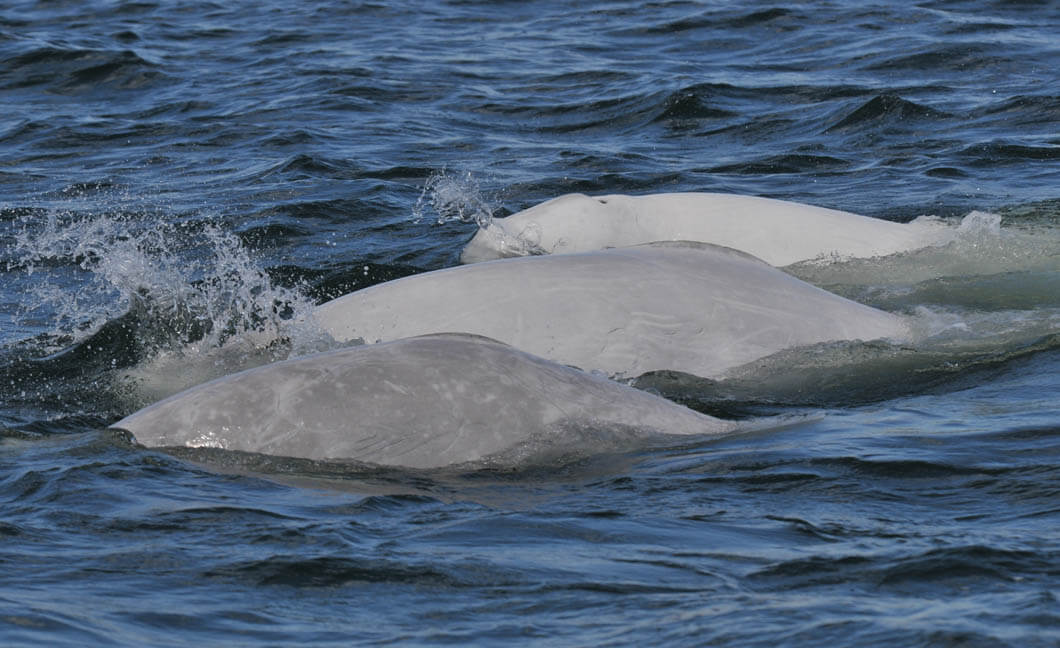Estimating the age of marine mammals is more complex than one might think. Few reliable techniques exist to determine the age of whales, at least in the case of living specimens. Yet it is an essential piece of information for monitoring populations, especially to know how many individuals are old enough to reproduce.
A number of methods are used to assess the age of a whale after it has died. This information is useful for scientific research to obtain an overview of marine mammal mortality. When a necropsy is performed, the age of the individual is estimated by counting growth layers in the teeth (article in French only), in the baleen or even in the ear wax of the carcass. Like the growth rings of a tree trunk, there are usually one or two new growth layers for each year. If it is a female, her ovaries can also tell us about the number of ovulations she has had in her lifetime, which can be used to calculate her age based on the age of sexual maturity in her species.
Age of living whales: a well-guarded secret
Evidently, the techniques used on carcasses are of no help when attempting to estimate the age of living whales. In fact, researchers have very few non-invasive and sufficiently accurate methods at their disposal.
Whether working in the field or examining a photo, the seasoned eyes of a specialist can differentiate newborns from juveniles or adults thanks to characteristics such as their relative size and the colour of their skin. For example, the beluga changes colour in the first few years of its life: café au lait at birth, it turns bluish-gray after one year, then becomes increasingly paler year after year until it reaches adulthood. But once an adult beluga has turned completely white, the human eye can no longer estimate its age. It could be 12 years old just as well as it could be 60!
We can determine the true age of an individual through photo-ID techniques if it has been known and photographed since birth. Otherwise, the minimum age of a whale can be determined based on its first photo. Photo-identification is a method that works well, but requires a great deal of resources and must be conducted continuously and every season if one wishes to photograph individuals from the year of their birth.
However, things get complicated when one wishes to know the age of an adult whale that is being observed for the first time. Fortunately, advances in technology are making it possible to develop new methods.
Aging of fat
The age of a whale can be assessed from a biopsy, which consists of a tiny sample of fat tissue obtained using a dart. This fatty tissue contains a variety of fatty acids whose composition is strongly influenced by diet. Researchers have obtained promising results by analyzing the ratios between different fatty acids in order to evaluate age. Some fatty acids are associated with old age while others are rather characteristic of young or juvenile animals. However, this method is not universal: a separate model must be designed for each population due to the influence of diet on fatty tissue composition.
When drones replace the human eye
Photogrammetry entails using a drone to take aerial photographs that are in turn used to take measurements of marine mammals. These data are useful for assessing the health of the animal, but can also be used to estimate its age. To do so, researchers must determine the species-specific growth curve by establishing a correlation between the size of an individual and its age. To develop the growth curve, they must use photogrammetry on individuals whose age is already known through photo-ID work or from individuals in an aquarium. They can also take carcass measurements and assess their age using post-mortem methods to establish comparative measurements for the species.
A study of the use of photogrammetry to determine the age of grey whales has shown that they stop growing only at the age of 40, whereas they have a life expectancy of between 50 and 70 years. As a result, this method works well for a good part of the whales’ lives, but cannot be used to age older individuals. It also has the advantage of being non-invasive and allowing the health of individuals to be monitored in parallel. The Bleuvet research team has been using photogrammetry since 2018 to evaluate the health of St. Lawrence belugas.
To learn more
Sources
Thar She Grows: A New Way to Tell a Gray Whale’s Age (Hakai Magazine, January 18, 2019)
(2015) Marcoux, M., V. Lesage, G.W. Thiemann, S.J. Iverson and S.H. Ferguson. Age estimation of belugas, Delphinapterus leucas, using fatty acid composition: A promising method. (United States.) Marine Mammal Science 31(3): 944-962.





